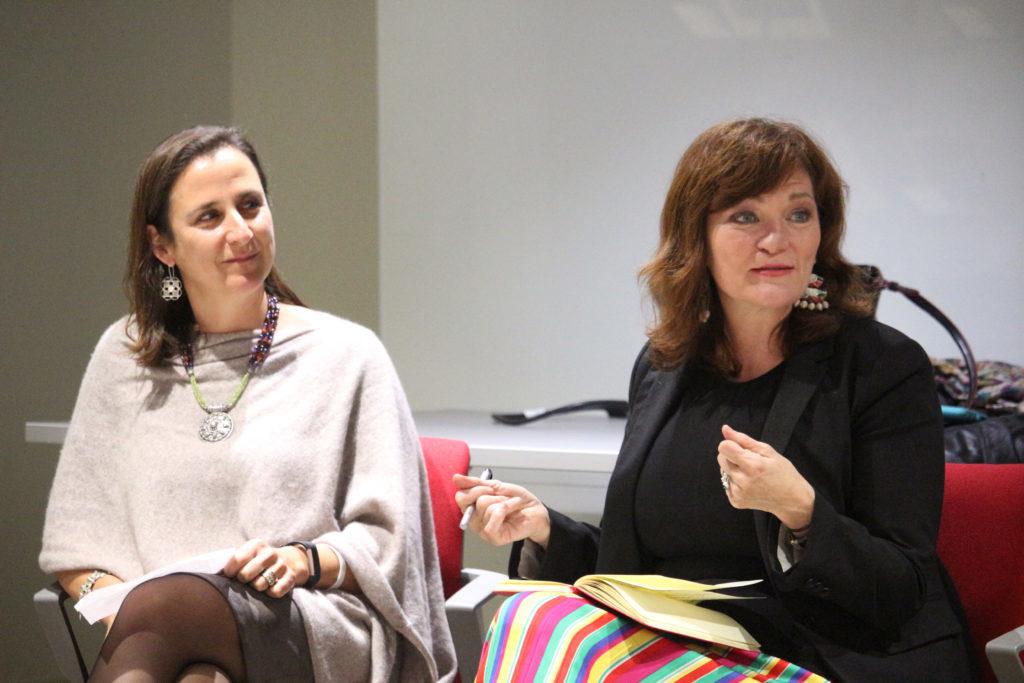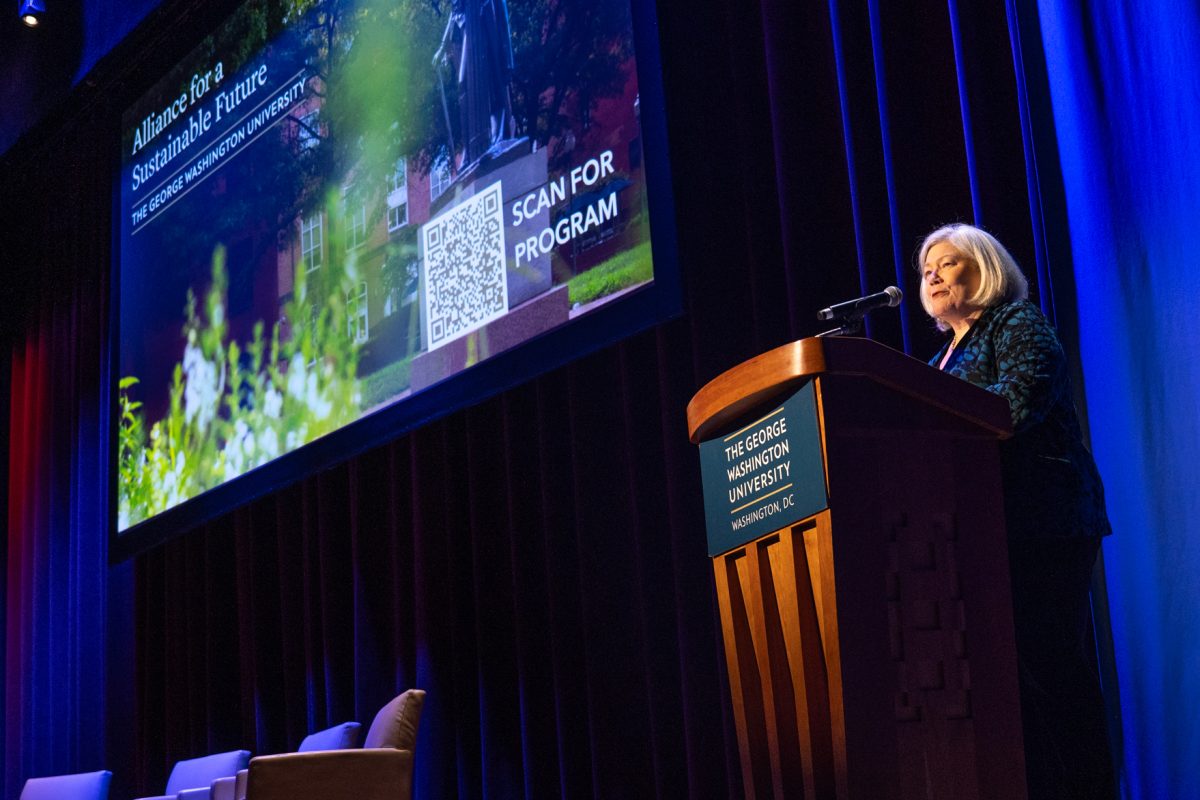Updated: Oct. 24, 2019 at 11:57 a.m.
A Time magazine editor discussed her publication’s role in shaping politics and culture at Gelman Library Tuesday.
Susanna Schrobsdorff, an executive editor for Time who works on both the editorial and business sides of the magazine, spoke about cultural boundaries, partisanship and the symbolic role of the magazine’s cover. The event, held at Gelman’s National Churchill Library and Center, was hosted by GW’s International Education Program and the “intercultural education” organization SIETAR’s D.C. chapter.
Schrobsdorff said journalists encounter cultural boundaries – like gender, racial and socioeconomic differences – every day. She said reporters should leave preconceptions “by the door” and learn about their sources in mundane ways like sitting down to eat with them, asking them about something they are wearing or inquiring about how their day has gone.
“You read up on people, you know exactly what they’ve done but it doesn’t prepare you,” she said. “You can walk into a room and you find you cannot assume anything. You cannot assume that the 43-year-old woman who you meet in Appalachia who only has four teeth left – literally – and has three grandchildren has nothing in common with you because eventually, you find that there is something in common.”
She said she never thought about her bias toward American values until she began reporting abroad, recalling an instance when she asked 1994 Olympic gold medalist Oksana Baiul’s coach about Baiul’s levels of happiness while training so intensely to compete. She said the coach’s response – “What has happiness got to do with anything?” – taught her that every person and culture values different goals.
“It was my first lesson that the pursuit of happiness and the resulting dissatisfaction with not being happy is peculiarly American,” she said.
Schrobsdorff, who was involved in shaping coverage of the 2017 Time Person of the Year, the women behind the #MeToo movement, said the stories about the women received 7 million views in their first few hours and was Time’s second-highest performing digital post ever published. She said the piece resonated with audiences because it focused on the women’s faces – instead of the men accused of assault – and framed women as “silence breakers” instead of as victims.
“I feel like that’s one of the moments where Time provided a moment of cultural clarity that endless newspaper headlines cannot, just by presenting a single image,” she said.
Schrobsdorff said selecting the “silence breakers” as Person of the Year sparked a broader conversation among Time editors and reporters about whether the #MeToo movement began with the sexual assault allegations surrounding Harvey Weinstein or with the Women’s March following President Donald Trump’s inauguration in 2017.
She said women often find themselves at odds with their respective field’s “bro-tocracy,” which discredits female perspectives on articles in the absence of excessive supporting research.
“I still find that most women have to jump up and down and say it three times and really work – even now if I say, ‘This is a story, we should do it,’ I have to have like 700 pages of supporting evidence,” she said. “I have to really make an airtight case.”
But Schrobsdorff added that younger women are less conscious of that dynamic, which is “great” because they more confidently pitch their ideas.
She said her cover story on the mental health of teenagers was the piece that meant the most to her because of her child’s struggle with depression and the emails she received from readers about the piece. She said the piece “made people feel less alone.”
“That’s the whole point of telling stories in the first place, is to make sure that people don’t feel so anomalous and alone,” she said. “And we’re in a horrifically divided moment, and I don’t know how we find some seed of empathy anymore. I don’t know where we find it.”
This post has been updated to reflect the following:
An earlier draft of this post listed Schrobsdorff’s title as chief strategic partnerships editor based on information on her Linkedin profile. She no longer has that role. This post has also been updated to better reflect the nature of Schrobsdorff’s involvement with Time’s Person of the Year coverage in 2017 and her remarks on women in the workplace.




